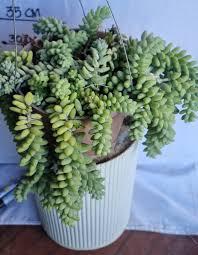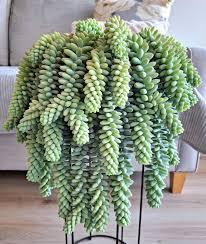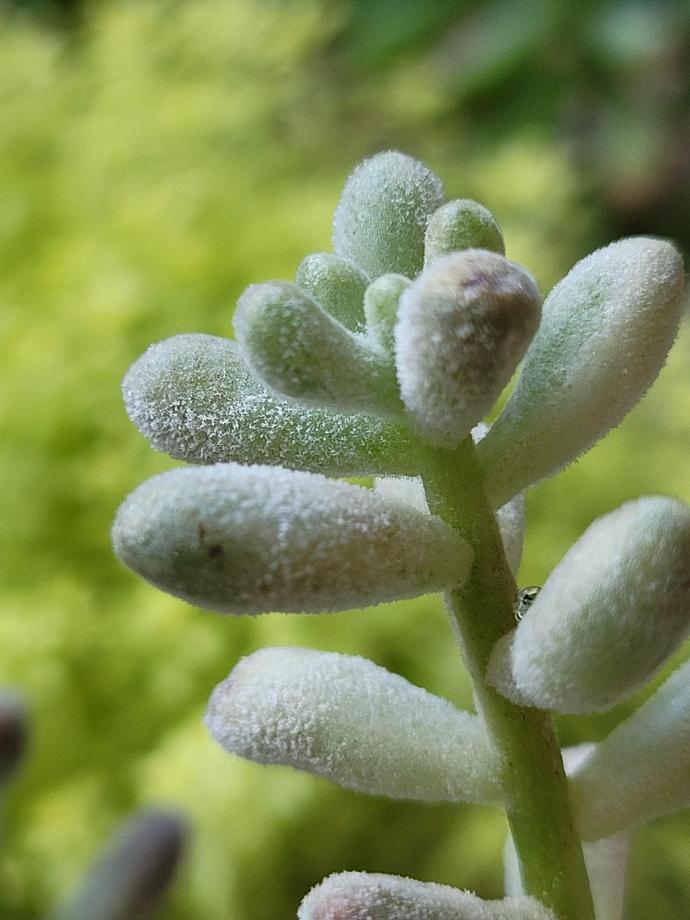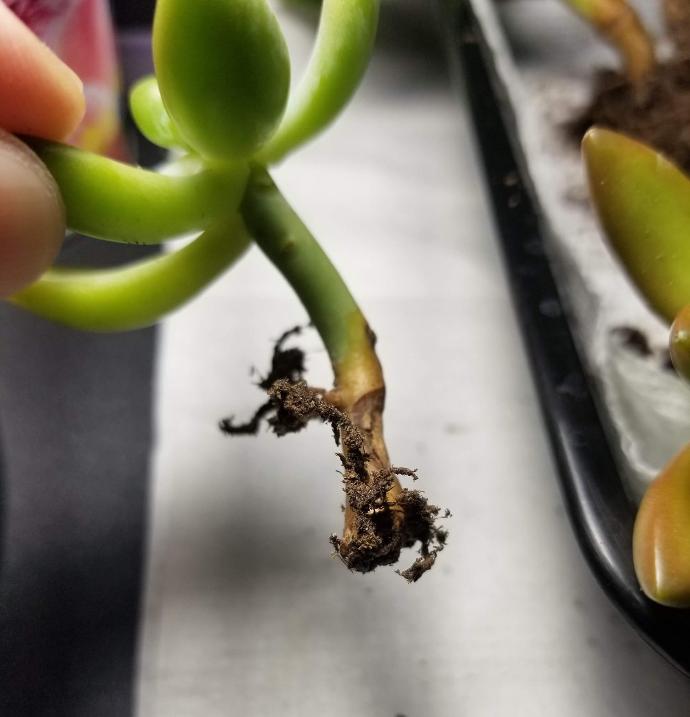Sedum hanging Plant
Sedum Hanging, a variety of Sedum, may have varying care requirements. Generally, plant in well-draining soil and provide bright, indirect light. Allow the soil to dry between waterings. Pruning helps control its growth and maintain a tidy appearance.
Habit
Perennial
Height
10-50 cm
Growth
Fast
Soil
Well-drained loamy
Shade
Full Sun to partial shade
Moisture
Dry to moderate
Edible
No
Medicinal
No
Origin
Mexico
Climatic Condition
Warm, Dry
Temperature (°)
15-30°C
Humidity (%)
40-70%
Potting media
Peat, compost
Fertilizers
Minimal, organic compost
Watering
Low
Plant Weight
100-500 g
Flowering Time
Rarely flowers
Soil Ph level
5.5 - 7.5
Water Ph level
5.5 - 7.5
Soil EC
1-2 dS/m
Yield Per Plant
Ornamental
NPK ratio
5:10:10
life Span
Perennial
Health Benefits
Hanging ornamental plant
Suggested Grow Media or Potting Mix ?
50% cactus mix, 25% perlite, 25% sand
Suggested Fertigation/Fertilizers
Fertilize every 6 weeks with a balanced, low-nitrogen fertilizer.
Common Diseases and Remedies
Powdery Mildew, root rot.
White powdery spots on leaves or wilting , dropping of leaves.
spraying of neem oil or a mixture of backing soda and water.
fungicides containing chlorothalonil, myclobutanil. Ensure proper watering and well draining soil to prevent diseases.
HEALTH BENEFITS
· purifying: Removes toxins from indoor air.
Traditional medicine: Some species have been used for wound healing.
What Is An Sedum Hanging Tree?
The Hanging Sedum is a stunning trailing succulent plant with rope-like leaves. Perfect for hanging baskets or as a trailing accent, it thrives in bright indirect light and requires minimal watering.

What Are The Different Types Of Areca Palm Plants?
Sedum morganianum (Burro's Tail or Donkey Tail): This variety has long, trailing stems covered with plump, blue-green leaves. It's often grown in hanging baskets or tall containers to showcase its trailing habit.
Sedum sieboldii (October Daphne): This variety has round, blue-green leaves that turn pinkish-red in the fall. It forms a trailing mound and produces star-shaped pink flowers in late summer to fall.
Sedum rupestre (Angelina or Blue Spruce Stonecrop): This variety has needle-like, yellow-green leaves that turn orange in the fall. It forms a dense mat and is often used as ground cover or in hanging baskets.
Sedum acre (Goldmoss Stonecrop): This variety has tiny, needle-like, green leaves that turn golden-yellow in full sun. It forms a dense mat and is suitable for rock gardens, containers, or hanging baskets.
Sedum spurium (Dragon's Blood Stonecrop): This variety has green leaves that turn red in the fall. It forms a dense, trailing mat and produces red flowers in late spring to early summer.

Location
The Hanging Sedum thrives in bright indirect light and requires minimal watering, making it perfect for busy individuals or those new to plant care. Its vibrant green color and trailing habit make it a versatile choice for various decor styles, whether you prefer a modern, minimalist look or a bohemian, eclectic vibe.
Sunshine
Introducing Sedum Nussbaumerianum Sunshine, a radiant succulent that brings a burst of warmth and vibrancy to your collection. Known for its striking golden-yellow leaves, this variety, also known as Golden Sedum or Coppertone Stonecrop, adds a touch of sunshine to any arrangement.
Soil
Sedums like well-drained soil – but it doesn't need to be deep because they're very shallow rooted. They also like – no – need – sunshine. Sedum plants just will not thrive in deep shade.
Hydration
Sedums like a very well-drained soil with a neutral to slightly alkaline pH. Wet, heavy clay can lead to root and stem rot. Spacing: Space tall growing sedums 1 to 2 feet apart. Space low-growing, creeping sedums 6 to 12 inches apart, depending on the variety and how quickly you want it to fill in an area.
Nourishment
Sedum typically needs no supplemental fertilization and can tolerate nutrient-poor soil. In fact, if the soil is too rich, this can cause weak, leggy growth. If you have very poor soil, mixing some compost into it will generally be enough to give your sedum a boost.
Issues
Benifits
Common stonecrop (Sedum acre) is a flowering plant that has sometimes been used to make medicine. People use common stonecrop for cough, high blood pressure, wound healing, and many other purposes, but there is no good scientific evidence to support these uses.

FAQs About Growing Areca Palms
Is sedum good for your skin?
Sedum Sarmentosum Extract with excellent moisture retention maintains skin moisture content and helps maintain clear skin tone due to its high content of vitamin C.
Can humans eat Sedum?
How to Eat It: Its bitterness can be mellowed out by sautéing. Red flowering sedum leaves, stems, and tubers are safe to eat raw in salads, but yellow flowering sedums have a mild toxicity and need to be cooked.
What is the local name of Sedum?
stonecrops
Sedum is a large genus of flowering plants in the family Crassulaceae, members of which are commonly known as stonecrops.
Is sedum medicinal?
Sedum telephium L. is a medicinal plant used in antiquity to cure many types of inflammatory skin diseases. The leaves (without the external cuticle), are used to promote healing and reduce skin inflammation and pain, and contain various components.
How do you eat sedum?
Also, some of the yellow-flowering Sedums can be slightly toxic if eaten in large amounts.) Sedum kamtschaticum can be eaten raw when young and tender. When older, cook briefly to help remove toxicity.

